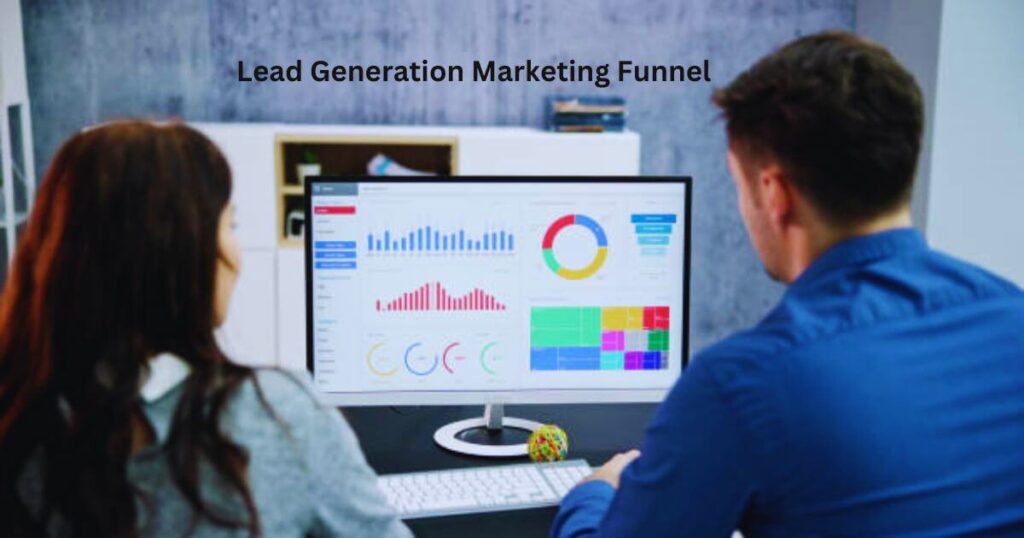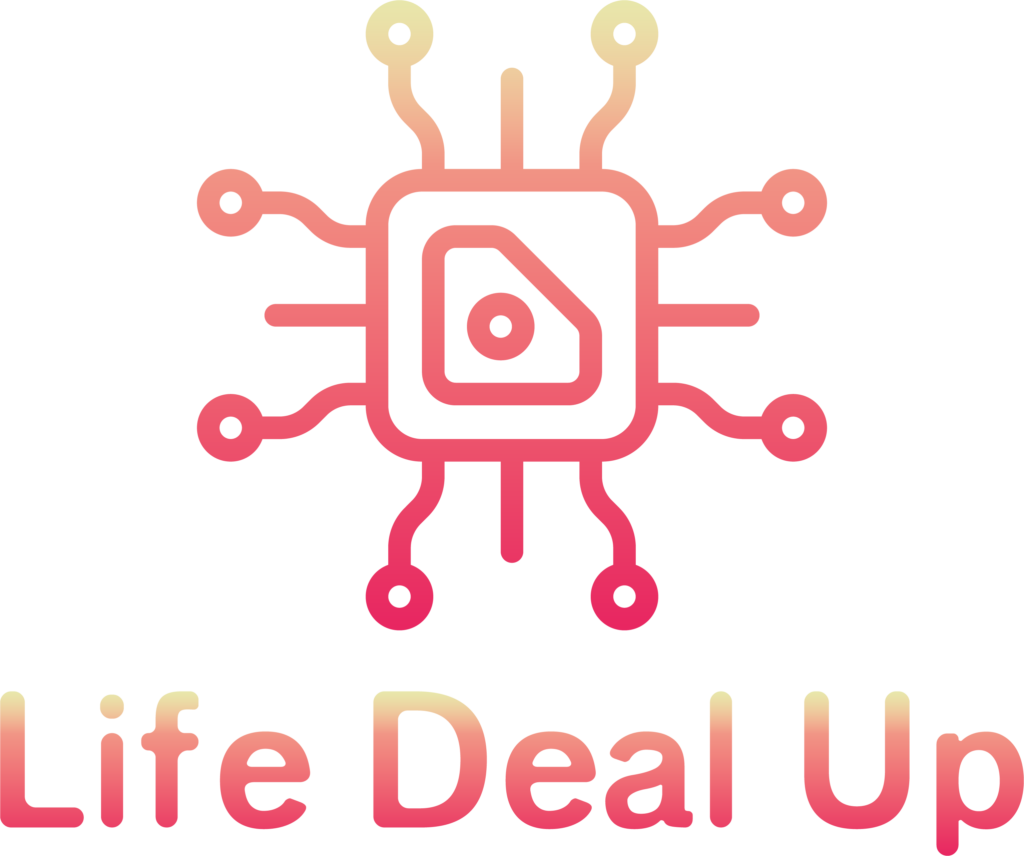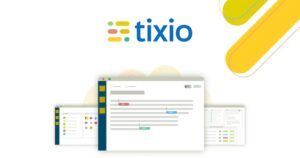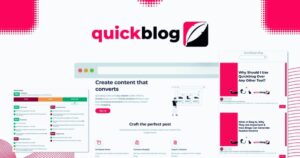Discover the best lead generation marketing funnel strategies to boost your sales and attract high-quality leads. Learn how to create a funnel that converts with proven techniques for affiliate marketers.
Lead generation is a key part of any business that wants to grow. But how do you generate the best leads? The answer is simple – by using the best lead generation marketing funnel. In this guide, we will help you understand how to create an effective lead generation funnel to boost your sales.
What is The Best Lead Generation Marketing Funnel?
The best lead generation marketing funnel is a step-by-step process that helps businesses attract and convert leads into customers. Think of it like a journey. It starts when people first learn about your business, and it ends when they become loyal customers.
The funnel has several stages. Each stage is designed to nurture the lead until they are ready to buy. The goal is to guide the lead through each stage until they reach the bottom, where they convert into a paying customer.

The Stages of The Best Lead Generation Marketing Funnel
- Awareness: At the top of the funnel, your potential customers first become aware of your business. This is where you introduce your products or services to them. This stage focuses on reaching a large audience.
- You can use social media ads, blog posts, videos, or any content that can catch the attention of your target audience.
- The main goal here is to make people aware of your brand. You don’t need to sell yet, just let them know you exist.
- Interest: Once your audience knows about your business, the next step is to spark their interest. You want them to learn more about your products or services.
- You can use free resources like ebooks, guides, or newsletters to provide more information.
- At this point, people are curious about what you offer, and you can show them how your solution can meet their needs.
- Consideration: Now that your potential leads are interested in your offer, they start to consider your business as a potential solution. They are comparing you to other options.
- At this stage, you need to prove that your product or service is the best solution for their problem.
- Offer case studies, customer reviews, or webinars to help build trust. The more they trust you, the more likely they are to buy.
- Conversion: Finally, the lead is ready to convert into a paying customer. This is the bottom of the funnel where all your hard work pays off.
- Provide them with a clear call to action. Make it easy for them to purchase or sign up for your service.
- Don’t forget to offer incentives like discounts or limited-time offers to encourage action.
Why is the Best Lead Generation Marketing Funnel Important?
Creating the best lead generation marketing funnel is important for several reasons:
- Increased Conversion Rates: A well-designed funnel helps turn more leads into customers. By guiding them through each step, you increase the chances of conversion.
- Better Targeting: A marketing funnel helps you identify which leads are most likely to buy. This allows you to focus your efforts on the people who are most interested in your business.
- Nurturing Leads: Not every lead will convert immediately. The funnel allows you to nurture leads over time, so when they are ready to buy, they think of you first.
- Improved ROI: By optimizing your funnel, you can make your marketing efforts more efficient. This means you get better results without having to spend as much on advertising.
- Building Relationships: The funnel helps you build long-term relationships with your customers. By providing value at each stage, you can keep your leads engaged and loyal.
How to Create the Best Lead Generation Marketing Funnel
Creating an effective best lead generation marketing funnel requires careful planning and the right tools. Here’s a simple guide to creating your own funnel.
1. Identify Your Target Audience
Before you can build your funnel, you need to know who you’re targeting. Who are your ideal customers? What are their needs and pain points?
Understanding your audience will help you create content that speaks directly to them. It will also help you choose the right channels to reach them.
2. Create Awareness with Great Content
At the top of the funnel, your goal is to attract as many people as possible. To do this, you need to create content that catches their attention.
- Blog Posts: Writing helpful and informative blog posts is a great way to attract visitors to your website.
- Social Media: Platforms like Facebook, Instagram, and Twitter are perfect for reaching a large audience.
- SEO: Make sure your website is optimized for search engines. This will help people find you when they search for related topics.
3. Nurture Your Leads with Free Resources
Once you’ve attracted leads, you need to nurture them. This means providing them with valuable information that will help them make an informed decision.
- Email Marketing: Build an email list by offering something for free, like an ebook or a course. Use email to provide more value and build trust.
- Webinars: Hosting webinars can help you connect with your leads and show them your expertise.
- Case Studies: Sharing success stories helps build credibility and trust.
4. Build Trust with Social Proof
As your leads move down the funnel, they will start looking for proof that your product or service works.
- Customer Reviews: Display customer reviews and ratings on your website and landing pages.
- Case Studies: Share detailed case studies to show how your product helped other customers.
- Testimonials: Get testimonials from happy customers to build trust.
5. Offer a Clear Call to Action
Finally, when your lead is ready to convert, you need to provide them with a clear and easy way to take action.
- Use strong calls to action (CTAs) that tell the lead exactly what to do next.
- Offer discounts or special offers to create a sense of urgency.

Optimizing Each Stage of Your Best Lead Generation Marketing Funnel
Now that we have an understanding of the different stages of the best lead generation marketing funnel, let’s dive into how to optimize each stage for the best results. By improving each stage, you can maximize conversions and create a streamlined process that guides your leads from awareness to conversion.
1. Optimizing the Awareness Stage
At the top of the funnel, your main goal is to attract as many leads as possible. Awareness is the first step, and without it, there can be no leads to nurture.
To optimize this stage, here are a few key tips:
- Targeted Content: Create high-quality content that is relevant to your target audience’s needs. This could include blog posts, infographics, videos, or podcasts. The more engaging and helpful the content, the more likely it will be shared, increasing your reach.
- Paid Ads: Use paid advertising like Facebook Ads or Google Ads to target your audience effectively. Focus on low-cost, high-reach ads to get your content in front of as many people as possible. Use clear, simple language that grabs attention quickly.
- SEO: Search engine optimization (SEO) helps your content rank higher on search engines like Google. Keywords are the backbone of SEO, so use relevant keywords in your blog posts, videos, and website content. Tools like Google Keyword Planner or SEMrush can help you find the best keywords for your niche.
- Social Media: Social media is a great tool for getting your content noticed. Share useful information that educates your followers. Engage with your audience and encourage them to follow you, comment, and share. Use hashtags and group discussions to extend your reach.
2. Optimizing the Interest Stage
Once potential leads become aware of your business, the next step is to spark their interest. This is where you begin to nurture them and turn curiosity into engagement.
To make this stage more effective:
- Offer Free Value: Offering free, high-quality resources like ebooks, whitepapers, or checklists can turn casual visitors into interested leads. Create resources that solve a problem or provide solutions your audience needs.
- Email List Building: Encourage visitors to sign up for your email list by offering valuable content. Once they’re subscribed, you can begin sending them more targeted content, keeping your brand fresh in their minds. Remember to send personalized content, which is far more effective than generic messages.
- Lead Magnets: Lead magnets are a great way to turn interest into action. These can be anything from a free trial, a free download, or a demo. You’re giving away something of value in exchange for the lead’s contact information. The more attractive the offer, the more likely people are to convert.
- Webinars and Live Demos: Offering live demonstrations or hosting webinars can greatly increase engagement at this stage. People get to see your product in action, and it builds trust. Don’t forget to promote the event in advance to gather a large audience.
3. Optimizing the Consideration Stage
At the consideration stage, your leads are evaluating their options. They’re thinking about whether your product or service is the best fit for their needs. This is a critical stage where you need to prove your value.
To optimize this stage:
- Customer Testimonials: Social proof can have a powerful impact at this point. Use testimonials from satisfied customers to build trust. Include detailed case studies that show how your product or service has helped others solve similar problems.
- Retargeting Ads: Retargeting ads can remind people who have interacted with your business before about your offer. For example, if they’ve visited a product page but didn’t make a purchase, retarget them with a tailored ad or a special discount to bring them back.
- Comparison Charts: Help your leads compare your product with your competitors. A well-structured comparison chart can highlight the benefits and features that make your product better, providing an objective reason to choose your solution over others.
- Detailed Product Information: Provide detailed descriptions of your products or services. This could include video demonstrations, feature lists, or pricing plans. Clear and concise information at this stage helps potential customers make informed decisions.
4. Optimizing the Conversion Stage
The conversion stage is the final step where leads become customers. This is the point where all of your previous efforts should come together. You need to make the process as easy and appealing as possible.
To increase conversions:
- Clear Call to Action (CTA): Your calls to action should be direct, simple, and appealing. For example, “Start Your Free Trial” or “Get 20% Off Today” are clear and actionable CTAs. Make sure they stand out on the page with a contrasting color and strong language.
- Limit-Time Offers: Use limited-time offers or discounts to create a sense of urgency. For instance, “This offer expires in 24 hours” encourages customers to act now before they miss out.
- Easy Checkout Process: Make sure the checkout process is as simple as possible. Avoid unnecessary steps, and ensure that forms are easy to fill out. The fewer barriers to entry, the higher the chances of conversion.
- Trust Signals: At this point, your leads are likely looking for trust signals. Display security badges, customer ratings, or money-back guarantees to reassure them that they are making the right choice.
5. Using Automation to Streamline the Funnel
Automation tools can help you save time and optimize your funnel by nurturing leads at every stage. Tools like HubSpot, Mailchimp, and Zapier can automate your email campaigns, social media posts, and follow-up sequences. By using automation, you can ensure that your leads are constantly moving down the funnel without the need for constant manual effort.
With the right automation strategy, you can send personalized emails based on user behavior, retarget visitors who didn’t convert, and even schedule posts on social media. This helps keep your funnel active 24/7 while freeing up your time for other business activities.
Continuously Improving and Testing Your Best Lead Generation Marketing Funnel
Building the best lead generation marketing funnel isn’t a one-time effort. It requires continuous improvement and testing to ensure that it remains effective and efficient. Even after you’ve created your funnel and started generating leads, there’s always room for refinement. By testing different aspects of your funnel, you can identify areas that need improvement and make adjustments for better results.
Here are some ways to optimize and test your funnel for maximum performance:
1. A/B Testing for Optimization
A/B testing (or split testing) is a powerful way to measure and compare the performance of different elements within your funnel. By testing two versions of the same page or email, you can find out which one performs better.
Here are some things you can A/B test in your funnel:
- Landing Pages: Test different headlines, layouts, and CTAs to see which combination gets the most conversions. Sometimes, a small change in the wording or design can lead to a significant difference in results.
- Emails: A/B test your subject lines, email copy, and CTAs to see which gets more opens and clicks. Try testing with different offers, such as discounts or exclusive content, to see what resonates more with your audience.
- Ad Copy: For paid ads, you can A/B test different ad copy, images, or videos. For instance, you can test two versions of an ad with different headlines or call-to-action buttons to see which gets more clicks.
- Lead Magnets: Test different types of lead magnets to see which one gets the highest sign-up rate. For example, offer an ebook in one test and a free webinar in another, then compare the results.
By constantly testing and refining your funnel, you can make data-driven decisions and improve your conversion rates over time.
2. Tracking and Analyzing Metrics
To know how best lead generation marketing funnel is performing, you need to track key performance metrics at each stage. Without proper tracking, you won’t know where leads are dropping off or which parts of the funnel need improvement. Here are some important metrics to track:
- Conversion Rate: The percentage of people who take the desired action, such as signing up for your email list or making a purchase. Improving this metric is key to increasing revenue.
- Lead Quality: Not all leads are created equal. Track the quality of the leads coming through your funnel. Are they engaging with your content? Are they likely to make a purchase? Monitoring lead quality helps you focus on the right audience.
- Cost per Lead (CPL): How much are you spending to acquire each lead? If your cost per lead is too high, you may need to adjust your ads, content, or targeting to reduce it.
- Bounce Rate: The percentage of people who visit your landing page but leave without taking action. A high bounce rate means your page isn’t resonating with your audience and may need adjustments.
- Customer Lifetime Value (CLTV): The total revenue you expect to earn from a customer during their relationship with your business. This helps you measure the long-term success of your lead generation efforts.
Once you’ve tracked these metrics, you can identify where in the funnel leads are getting stuck and take action to fix it. For example, if you notice a high bounce rate on your landing page, you may want to adjust your messaging or improve the page design.
3. Improving Lead Nurturing Strategies
Not all leads will convert right away, and that’s okay. Some will need time and consistent engagement before they’re ready to buy. That’s why lead nurturing is such an important part of the funnel. Here are some tips for improving lead nurturing:
- Segment Your Leads: Not all leads are in the same stage of the funnel. By segmenting your leads based on their behavior (such as how they interacted with your content or how long they’ve been on your list), you can send more relevant content. For example, someone who downloaded your ebook might be interested in a follow-up email with a free trial offer.
- Personalize Your Content: People respond better to personalized content. Use the information you have about your leads (such as their name, interests, or past behavior) to tailor your messages. This can increase engagement and conversion rates.
- Create a Lead Scoring System: Lead scoring helps you prioritize which leads are most likely to convert. You can assign scores based on actions, such as downloading a resource, attending a webinar, or clicking on a product page. Leads with higher scores should receive more attention and targeted offers.
- Follow Up with Timely Emails: Email marketing is a great way to nurture leads. Set up automated email sequences that follow up with leads at various points in the funnel. For instance, send a thank-you email after they download a free resource, followed by an email offering additional helpful tips, and finally, an email with a special offer.
4. Refining Your Sales Process
Even if you have a highly effective funnel, you still need a smooth and well-organized sales process to close deals. Improving your sales process will help you convert leads into paying customers more efficiently.
Here’s how you can refine your sales process:
- Qualify Leads: Make sure your sales team is qualifying leads before they try to sell. Not every lead will be ready to buy, so it’s important to identify the leads who are most likely to convert.
- Automate Follow-Ups: Use CRM software to track and follow up with leads automatically. Set reminders for your sales team to reach out to high-value leads at the right time.
- Offer Personal Consultations: For high-ticket products or services, offering a personal consultation can be a great way to close the deal. A one-on-one call allows you to address any objections and provide personalized advice.
- Handle Objections: Sales is all about overcoming objections. Train your sales team to handle common concerns like price, product features, or delivery times. Offering a clear and confident answer can build trust and make the lead more likely to purchase.

Conclusion
Creating and maintaining the best lead generation marketing funnel is crucial for your business’s success. It helps you attract, nurture, and convert leads into loyal customers. But it doesn’t stop there – continuous optimization, testing, and improving your funnel will ensure that you stay ahead of your competition and continue to grow.
By focusing on creating high-quality content, optimizing each stage of the funnel, using automation, and tracking performance, you can create a system that works for you around the clock. With the right strategy in place, you can boost your conversions, increase your sales, and grow your business in a sustainable way.
Frequently Asked Questions
What is a best lead generation marketing funnel?
A best lead generation marketing funnel is a step-by-step process that guides potential customers from awareness to conversion, ultimately turning them into paying customers.
How can I optimize my lead generation funnel?
To optimize your funnel, focus on creating high-quality content, using targeted ads, nurturing leads with personalized email sequences, and A/B testing different elements to improve conversions.
What is A/B testing, and why is it important?
A/B testing involves comparing two versions of a page, email, or ad to see which one performs better. It’s important because it helps you make data-driven decisions that can improve the performance of your funnel.
How can I nurture leads effectively?
You can nurture leads by providing value through email marketing, lead magnets, webinars, and personalized content. Segmenting your leads and automating follow-up emails can also increase engagement.
What metrics should I track in my funnel?
Important metrics to track include conversion rate, lead quality, cost per lead, bounce rate, and customer lifetime value. These metrics help you measure the success of your funnel and identify areas for improvement.




